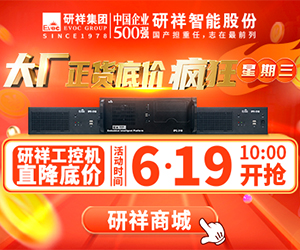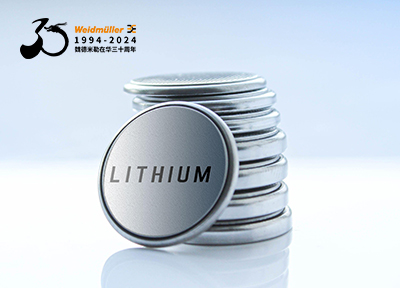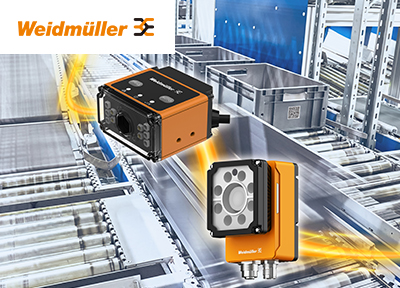Reed Research Group surveyed control Engineering subscribers in December 2008 about their use of control Valve actuators currently, and going forward. The results presented here are based on 224 completed responses from subscribers who evaluate, specifyCONTROL ENGINEERING China版权所有, recommend, install控制工程网版权所有, and/or purchase these devices. Among these, 46% say they run both batch and continuous processesCONTROL ENGINEERING China版权所有, 25% run continuous processes only, 14% are batch only plants, and the balance fall into other categories. Liquid handling ou
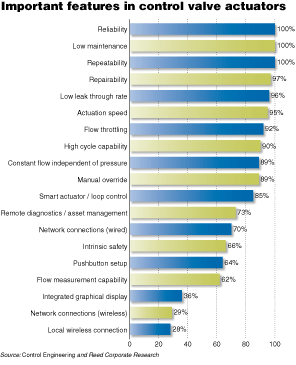
Many different size companies responded. A large segment (48%) buy 24 units or fewer annually. A sizable middle group of 34% covers the intermediate space of 25 to 149 units annually, and the large users at 150+ account for 18%. The bulk of valves (75%) have integral actuators, with the balance mounted as a separate item. Pneumatic actuators still dominate at 45%, but electric units are a close second at 40%. Manual designs take most of the balance.
The critical nature of control valve operation comes through when comparing the answers to a number of questions. Reparability and cost factors topped the list of most important factors for selection, followed closely by manufacturer’s reputation and availability from stock. Actuators are expected to perform reliability, but must be economical, and easy to repair or replace when there are problems. Most companies (60%) do their own actuator repairs in housewww.cechina.cn, with the balance split between factory and third-party shops. Generally, actuators operate without a large amount of maintenance, as 46% report that they have to service actuators once every three or more years, and 29% said once per two years. Only 25% require service once per year or less.
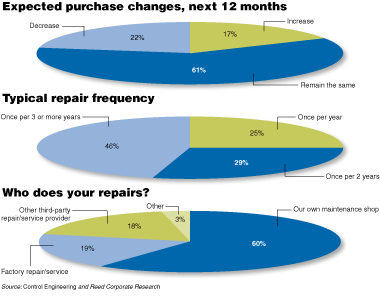


 在线会议
在线会议 论坛
论坛 专题
专题 工控直播
工控直播 新闻中心
新闻中心 子站
子站 技术
技术 社区
社区



 IDEC HR8S系列新一代安全继电器有奖试用活动
IDEC HR8S系列新一代安全继电器有奖试用活动 2025(第二十一届)年度最佳产品奖有奖投票中
2025(第二十一届)年度最佳产品奖有奖投票中 AVEVA剑维软件食品饮料行业白皮书有奖下载
AVEVA剑维软件食品饮料行业白皮书有奖下载 立即有奖下载TE重载连接器选型指南
立即有奖下载TE重载连接器选型指南 2025(第十四届)全球自动化和制造主题峰会
2025(第十四届)全球自动化和制造主题峰会
